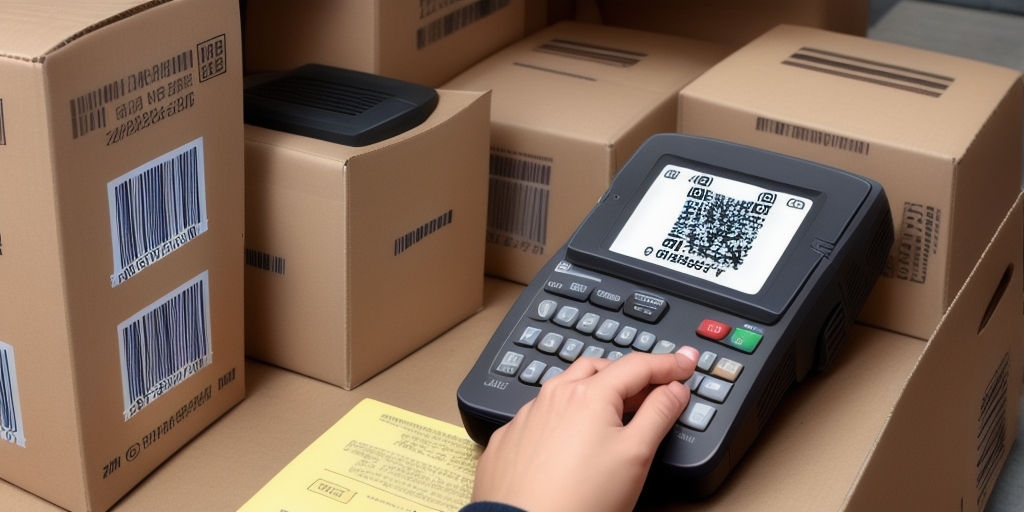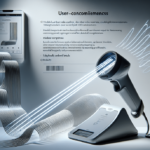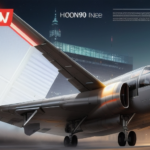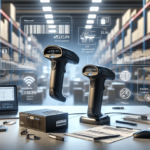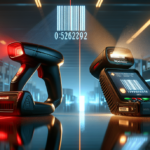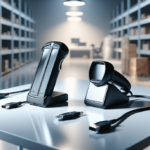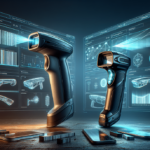Introduction to Barcode Scanners
Barcode scanners are crucial tools in various industries, including retail, logistics, and inventory management. They streamline the tracking of product information and movements, enhancing operational efficiency and accuracy. By utilizing light sensors, these scanners capture and decode barcode information, which is then processed and stored in computer systems for effective inventory management.
There are several types of barcode scanners designed to meet different operational needs:
- Handheld Scanners: Portable devices ideal for scanning items that are difficult to reach or move.
- Fixed-Mount Scanners: Stationary scanners used in automated systems for high-volume scanning tasks.
- Presentation Scanners: Designed for retail environments, these scanners are used at the point of sale to quickly scan items.
Comparing WoneNice USB Laser Barcode Scanner and Zebra DS8178
When selecting a barcode scanner, understanding the key differences between models can aid in making an informed decision. This section provides an in-depth comparison of the WoneNice USB Laser Barcode Scanner and the Zebra DS8178, focusing on their features, performance, pricing, ease of use, and customer feedback.
Key Features
WoneNice USB Laser Barcode Scanner
- Multi-Barcode Support: Compatible with various barcode types, including UPC/EAN, Code39, and Code128.
- USB Connectivity: Plug-and-play setup via USB, eliminating the need for additional software or drivers.
- Durable Construction: Built to withstand accidental drops and bumps, ensuring longevity in demanding environments.
- Fast Scanning Speed: Facilitates efficient data collection, ideal for businesses requiring quick turnaround times.
- Wide Scanning Range: Capable of reading barcodes from a distance, useful for scanning items placed on high shelves or in hard-to-reach areas.
Zebra DS8178 Barcode Scanner
- Comprehensive Barcode Support: Reads 1D, 2D, and PDF417 barcodes, accommodating a wide range of scanning needs.
- Intelligent Illumination System: Automatically adjusts light intensity based on barcode type and reading distance, ensuring accurate scans in various conditions.
- Wireless Connectivity: Offers mobility with wireless options, eliminating the constraints of cords and cables.
- Long Battery Life: Supports extended scanning sessions without the need for frequent recharging.
- Durable Design: IP42-rated and drop-resistant up to 6 feet, suitable for harsh industrial environments.
- Ergonomic Grip: Designed for comfort during prolonged use, reducing user fatigue and enhancing productivity.
Performance Analysis
Performance metrics are critical in determining the suitability of a barcode scanner for specific business needs:
- Zebra DS8178:
- Advanced Scanning Technology: The intelligent illumination and sophisticated barcode reading algorithms ensure high accuracy, even in low-light or complex environments.
- Scanning Speed: Capable of handling high-throughput settings with faster scanning rates, enhancing operational efficiency.
- System Compatibility: Broad compatibility with various operating systems and software platforms facilitates seamless integration into existing systems.
- WoneNice USB Laser Barcode Scanner:
- Affordability: Lower cost makes it accessible for businesses with tighter budgets.
- Portability: Lightweight and compact design ensures ease of transport and use in diverse locations.
- Basic Functionality: Suitable for environments where advanced features are not necessary.
According to a Technology Review, the Zebra DS8178 demonstrates superior performance in high-demand environments, making it a preferred choice for large-scale operations.
Pricing Comparison
Pricing is a significant factor when choosing a barcode scanner:
- WoneNice USB Laser Barcode Scanner: Positioned as a more affordable option, it provides essential scanning capabilities without the added cost of advanced features.
- Zebra DS8178 Barcode Scanner: Higher in price, reflecting its comprehensive feature set and robust performance. It’s a worthwhile investment for businesses that demand reliability and advanced functionality.
As reported by Capterra, businesses often find the Zebra DS8178 offers greater long-term value despite its higher initial cost due to its durability and advanced features.
Ease of Use
- WoneNice USB Laser Barcode Scanner: Simple plug-and-play setup via USB, making it easy for users with minimal technical expertise.
- Zebra DS8178 Barcode Scanner: Offers wireless connectivity options for enhanced mobility. Its ergonomic design ensures comfortable handling during extended use.
Both scanners are designed for user-friendly operation, but the Zebra DS8178's wireless capabilities provide added convenience in dynamic work environments, as highlighted by user reviews on TrustRadius.
Pros and Cons
WoneNice USB Laser Barcode Scanner
- Pros:
- Affordable pricing
- Compatibility with most operating systems
- Durable construction
- Cons:
- Limited barcode type support
- No wireless connectivity
Zebra DS8178 Barcode Scanner
- Pros:
- Advanced scanning technology
- Wireless connectivity
- Long battery life
- Rugged and durable design
- Cons:
- Higher cost
- Larger size compared to WoneNice
Customer Reviews and Feedback
Customer feedback provides valuable insights into the real-world performance of barcode scanners:
- WoneNice USB Laser Barcode Scanner:
- Praised for its affordability and reliability
- Users appreciate its durability and ease of setup
- Some users note limitations in barcode compatibility
- Zebra DS8178 Barcode Scanner:
- Highly rated for its advanced features and performance
- Users value the wireless functionality and long battery life
- Some feedback mentions the higher price point
According to reviews on Gartner, the Zebra DS8178 consistently receives high ratings for its performance in demanding environments, while the WoneNice scanner is favored for cost-effective, basic scanning needs.
Conclusion: Choosing Between WoneNice USB Laser and Zebra DS8178
The decision between the WoneNice USB Laser Barcode Scanner and the Zebra DS8178 Barcode Scanner hinges on your business's specific needs:
- Choose WoneNice if:
- You operate a small to medium-sized business
- Require a cost-effective solution for basic scanning tasks
- Prefer a straightforward, plug-and-play device without the need for advanced features
- Choose Zebra DS8178 if:
- You manage a large-scale operation with high scanning volumes
- Need advanced scanning capabilities, including 2D and PDF417 barcode support
- Require wireless connectivity and robust, durable hardware for industrial environments
Ultimately, both scanners are valuable tools, and the best choice depends on balancing your operational requirements with your budget.
Factors to Consider When Selecting a Barcode Scanner
To ensure that a barcode scanner aligns with your business needs, evaluate the following aspects:
- Barcode Compatibility: Ensure the scanner supports the types of barcodes you use, such as 1D, 2D, or QR codes.
- Connectivity: Decide between wired (USB) or wireless options based on your operational setup and mobility requirements.
- Durability: Consider the scanner's build quality, especially if it will be used in harsh or demanding environments.
- Scanning Speed: Faster scanners improve efficiency, particularly in high-volume settings.
- Ease of Use: User-friendly interfaces and ergonomic designs reduce training time and enhance productivity.
- System Compatibility: Verify that the scanner integrates seamlessly with your existing software and hardware systems.
- Budget: Balance the cost of the scanner with the features and capabilities required for your operations.
For a comprehensive guide on selecting barcode scanners, refer to resources such as Business News Daily.
Future Trends in Barcode Scanning Technology
The barcode scanning industry is evolving with technological advancements, leading to improved efficiency and enhanced capabilities:
- Artificial Intelligence and Machine Learning: Enhancing barcode recognition accuracy and enabling predictive analytics for better inventory management.
- Mobile Integration: Increasing use of mobile devices with integrated scanning capabilities for on-the-go operations, supported by developments in smartphones and tablets.
- Enhanced Connectivity: Adoption of IoT (Internet of Things) for interconnected scanning devices, improving real-time data synchronization and inventory tracking.
- Augmented Reality (AR): Combining barcode scanning with AR to provide interactive and informative customer experiences, such as virtual product displays and enhanced shopping guides.
These advancements are projected to further streamline retail operations, improve inventory accuracy, and enhance the overall customer experience. According to a report by Forbes, the integration of AI and IoT in barcode scanning will play a pivotal role in the next generation of inventory management systems.
In conclusion, both the WoneNice USB Laser Barcode Scanner and the Zebra DS8178 Barcode Scanner offer reliable and accurate performance tailored to different business needs. Assess your specific requirements, including scanning volume, feature necessities, and budget, to choose the most suitable scanner for your operations. Investing in the right barcode scanner will significantly enhance the efficiency and accuracy of your business processes.















